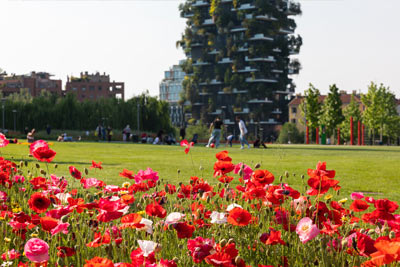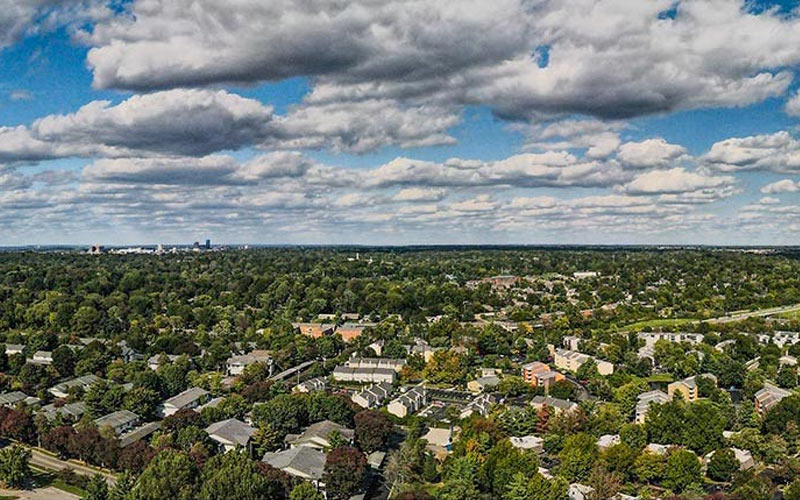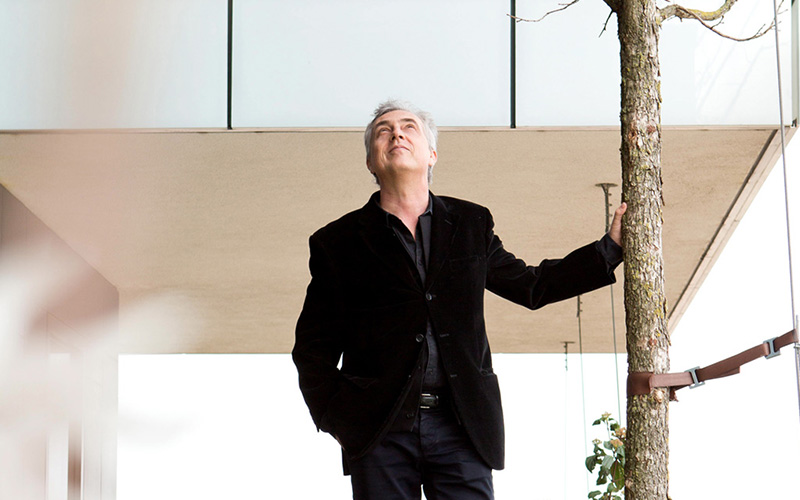“The first thing I ask people who talk to me about their city is almost always the same: what are its parks like?” Luis Romahn is the CEO of World Urban Parks, an organisation that promotes and supports the effective management and use of urban parks, open spaces and recreational activities around the world, making its contribution to maintaining healthy communities with strong links to the natural world. Luis spoke to Urban Stories about the drivers behind World Urban Parks’ deep-rooted commitment to the growth and spread of urban parks as a response to the growing social and economic challenges of our cities today.

Luis Romahn, CEO World Urban Parks
“Parks are constitutively democratic spaces: they are places that belong to all of us, and they are open and accessible to anyone and everyone. They are key resources in terms of sustainability, safety and public health. Promoting awareness of their value should be a common and shared responsibility, rather than merely the duty of the authorities”.
In this regard, we have finally seen a shift come about in the last few years. “A number of experiments conducted in major cities around the world thanks to the commitment and vision of citizens, urban planners and public representatives have paved the way, demonstrating the fact that creating a shared public space is almost never an issue of space or funds, but merely of will. Just think of the Millennium Park in Chicago or New York’s famous High Line Gallery, but equally the many green lungs that have popped up in the heart of a great many other cities in recent years”.

BAM – Library of Trees park
On this matter, Luis Romahn mentions Italy’s best exemplar of this international trend, namely the Biblioteca Degli Alberi di Milano (Library of Trees in Milan), nestled within the Porta Nuova neighbourhood, urban park and botanical garden managed by the Riccardo Catella Foundation that throughout the BAM project produces a diverse programme of cultural events and activities. “It’s a beautiful park with a truly innovative design that has inclusivity at its core. Its strong point is undoubtedly its ability to engage people with the wide range of services it offers, along with its strategic location in an area that is well served by not only public transportation, but also a wealth of paths for cyclists and pedestrians alike,” notes Romahn.
“BAM is a model worth emulating, as it pays testament to the importance of investing in parks from both an urban planning and an economic point of view; what’s more, it shows how collaboration between private groups and public administrations can create boundless beauty and wealth without sacrificing the latter for the former, as is all too often the case”.
But Romahn feels it important to emphasise that parks are democratic spaces because they are created to respond to the needs of the citizens themselves and of the communities who live in the area. “Allow me to give you an example of a park that is very close to my heart: La Mexicana, located in the Santa Fe district of Mexico City. This is a wonderful example of a public-private partnership, willed into being by the local citizens, who have been relentlessly pressing the government for years to make it happen”.
Today, La Mexicana is a 29-hectare urban park that is home to green spaces, recreational areas, and a whole host of public events and initiatives, “and it has proven to be an extraordinary economic driver for the entire area: local property has increased in value, new businesses have sprung up both inside and outside the park, and La Mexicana receives more and more visitors and tourists every year, all attracted by the many events and recreational offerings available”.
See also: Porta Nuova, the first neighbourhood designed for the community
In order to have a truly positive impact on communities, however, urban parks must satisfy a number of characteristics and follow precise guidelines. “From this perspective, it is essential to always start by drawing up a master plan and soliciting contributions from experts such as architects and urban planners. Take, for example, a place that everyone knows and has heard of: Central Park in New York”. Romahn starts by rattling off the numbers: “from 1981 to 2015, this key green lung in the heart of Manhattan saw its number of visitors skyrocket from 12 to 42 million and, over the same thirty-year period, the number of crimes committed in the park decreased from about a thousand to fewer than a hundred”.
How was it possible to achieve these results? “Urban regeneration is not simply a tool for modernisation, it is also a wonderful opportunity in terms of improving the wellbeing of citizens and public safety and security,” notes Romahn with a smile. This presupposition entirely overturns the common misconception that associates security with control, and wealth with the exploitation of an area rather than its beneficial transformation: “Central Park is managed by a private non-profit organisation, the Central Park Conservancy, which has spent recent years radically transforming the look and reputation that the park had in the late 1970s, instead creating more space for the initiatives put forward by the citizens who lived there. This is tangible proof of the importance of the role of non-governmental bodies and citizens’ organisations in urban redesign and regeneration projects”.
See also: The green revolution of Pirelli 39
In this vein, World Urban Parks is also an organisation that relies on the expertise and experience of its members and partners to strengthen the leadership of urban parks and bring about significant improvements in large cities where rapid urbanisation is underway, providing advice and support at an international level.
“The main cornerstones that our work is founded upon, guiding everything we do, are advocacy and alliance: this means that thanks to our network of partners and professionals from around the world who collaborate with us, we endeavour to spread the word about the importance of having urban parks everywhere, promoting their value in terms of benefits and opportunities,” continues Romahn, explaining that the organisation that he heads up is constantly engaged in arranging training initiatives and an incredible five annual congresses in various parts of the world, set up to share their best practices internationally.
As such, networking - be it through physical events or digital activities - is an essential part of encouraging people to share their different experiences and of making both the public and the authorities increasingly aware of the need to provide urban centres, whatever their size, with open spaces for socialising that also offer citizens the opportunity to enjoy close contact with nature within walking distance of their homes and workplaces.
See also: Investing in the welfare of communities
“We are always on the lookout for new ideas and winning projects, and that’s why we recently launched the second edition of the Emerging Urban Leaders programme, which attracted an impressive selection of ideas to promote change last year,” concludes Romahn. “But that’s not all: every year, we are committed to highlighting best practices around the world by awarding them with prestigious international prizes, such as the World Urban Parks Awards, which we give to those who have made a particularly impressive mark in the design of new urban parks or the promotion and management of social and cultural activities for these open spaces”.
In light of the global situation at this point in history, betting on parks is unquestionably a winning strategy. And perhaps, as Luis Romahn points out with a smile, “it is the only real strategy” for an age in which people desperately need to experience community again, to rediscover contact and exchange with others in open and inclusive places, where sustainability becomes the touchpoint between tradition and innovation.



